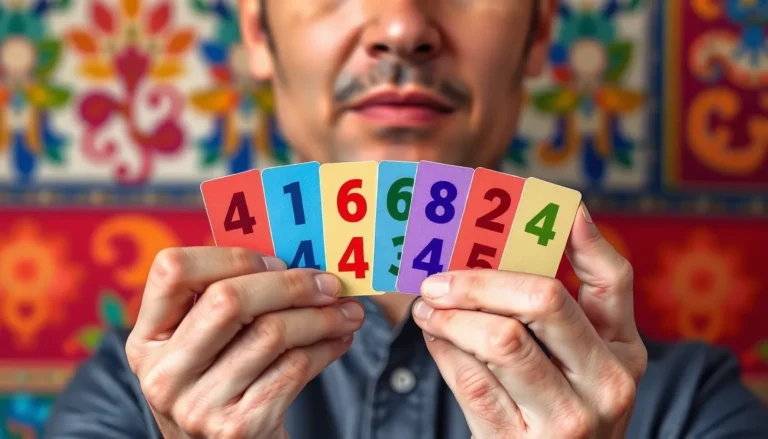Table of Contents
ToggleEver watched a movie that left you scratching your head, wondering what just happened? Welcome to the world of breakdowns, where plot twists and character decisions can make you laugh, cry, or just plain confused. Breakdowns aren’t just for cars—they’re also a goldmine for cinematic moments that defy logic and keep audiences on their toes.
Overview of Breakdowns Movie
Breakdowns in movies serve as pivotal moments that shift narratives. These unexpected turns deepen emotional engagement. Characters often face dilemmas that reveal their true selves. Audiences experience a mix of surprise and intrigue as plots unfold in unpredictable ways.
Film narratives can include significant breakdowns, such as a sudden betrayal or a life-changing revelation. Each moment highlights character development and changes the story’s trajectory. For example, in psychological thrillers, these breaks often lead to dramatic turns that challenge viewers’ assumptions.
Cinematic breakdowns can invoke various emotions. Laughter can erupt in a comedy when a character’s plan goes awry. Tension builds in dramas as protagonists grapple with unforeseen consequences.
A strong breakdown scene can enhance viewer investment in the story. It creates suspense and maintains interest throughout the film. Viewers often find themselves on an emotional rollercoaster; shifting from elation to despair within moments.
Some notable examples of breakdowns include unexpected fatalities and major plot reveals. Such moments captivate audiences, encouraging discussions about character motivations and plot dynamics. Shifting expectations keeps viewers engaged, often leading to repeated viewings and prolonged discussions.
Breakdowns not only alter stories; they also influence the way audiences communicate about films. They provoke debates, allowing fans to analyze choices and outcomes. The impact of these moments extends beyond the screen, enriching the viewing experience and enhancing appreciation for cinematic storytelling.
Plot Summary
Breakdowns in movies create compelling shifts in narrative arcs, affecting character development and emotional engagement. Significant plot twists and unexpected character choices shape the viewing experience, enhancing intrigue and evoking a spectrum of emotions.
Main Characters
Complexity defines the main characters in breakdown scenes. Protagonists often face moral dilemmas that force them to reveal their true selves. Key figures might include a stubborn detective, who uncovers shocking truths, or a relatable everyman, thrust into extraordinary circumstances. Decisions made by these characters drive the plot’s momentum, making them essential to the unfolding drama. Each character’s journey demonstrates how personal stakes deepen emotional reactions, allowing the audience to connect on multiple levels.
Key Themes
Common themes emerge within breakdown moments, highlighting conflict and transformation. Identity, vulnerability, and betrayal frequently appear as key motifs. These themes resonate with audiences, showcasing the fragility of human relationships in the face of adversity. An unexpected revelation might challenge a character’s sense of self, illustrating how chaos can lead to growth. The exploration of trust, loss, and resilience adds depth, transforming simple narratives into profound reflections on human experience.
Cinematic Techniques
Cinematic techniques play a crucial role in conveying breakdowns in films. They enhance storytelling and evoke emotions during pivotal moments.
Direction and Cinematography
Direction and cinematography establish the film’s visual language. Directors often employ techniques such as close-ups to capture characters’ emotional states during intense breakdown scenes. Camera angles shift for dramatic effect, emphasizing vulnerability or tension. Lighting choices enhance mood, creating shadows that suggest deceit or revelation. Moreover, pacing within scenes contributes to the overall impact, with slower movements heightening suspense. The visual style immerses viewers by inviting empathy, allowing them to connect deeply with characters facing dilemmas.
Soundtrack and Score
Soundtrack and score significantly influence the emotional landscape of breakdown scenes. Composers use music themes to heighten tension or evoke nostalgia, reflecting characters’ inner turmoil. Sudden shifts in the score can create shock moments, accentuating plot reveals. Sound design also enhances immersion by incorporating ambient sounds that amplify tension. The combination of music and sound elevates key emotions, allowing audiences to experience the weight of each breakdown vividly. Soundtracks reinforce narrative shifts, instilling a lasting impression long after the film ends.
Audience Reception
Audience reception of breakdowns in movies highlights the emotional and narrative impact of these moments. Strong responses from viewers often stem from the intensity and unpredictability of these scenes.
Critical Reviews
Critics frequently praise breakdowns for their ability to elevate storytelling. Films featuring significant breakdowns often receive acclaim for character development and plot complexity. Reviewers note how unexpected twists challenge audience expectations, making the narrative more engaging. Films like Seven and Fight Club exemplify this, with commentators hailing their effective use of breakdowns to drive tension. Critiques often underscore the skillful direction and writing that facilitate these powerful moments. High ratings in film reviews commonly reflect the successful execution of breakdowns, highlighting their importance in modern cinema.
Viewer Reactions
Viewer reactions to breakdowns showcase a broad spectrum of emotions. Audiences often express shock, excitement, and even empathy when faced with critical plot twists. Memorable breakdowns spark conversations among viewers, generating discussions that delve into character motivations and underlying themes. Social media platforms frequently buzz with viewers sharing their interpretations and favorite moments from films. This engagement reflects the lasting impression breakdowns leave on audiences, fostering a sense of community among fans. Rewatching films with significant breakdowns frequently occurs, illustrating the intrigue these moments create in the viewing experience.
Breakdowns in movies are more than just plot twists; they’re essential elements that deepen emotional connections and enhance storytelling. These pivotal moments create suspense and provoke discussions that resonate with audiences long after the credits roll. By revealing characters’ true selves and challenging their moral compasses, breakdowns transform narratives into profound reflections on human experiences.
The cinematic techniques that accompany these moments amplify their impact, immersing viewers in the unfolding drama. As films continue to explore the complexities of breakdowns, they will undoubtedly remain a focal point for both filmmakers and audiences alike. The conversations sparked by these moments enrich the viewing experience, fostering a shared appreciation for the art of storytelling in cinema.




